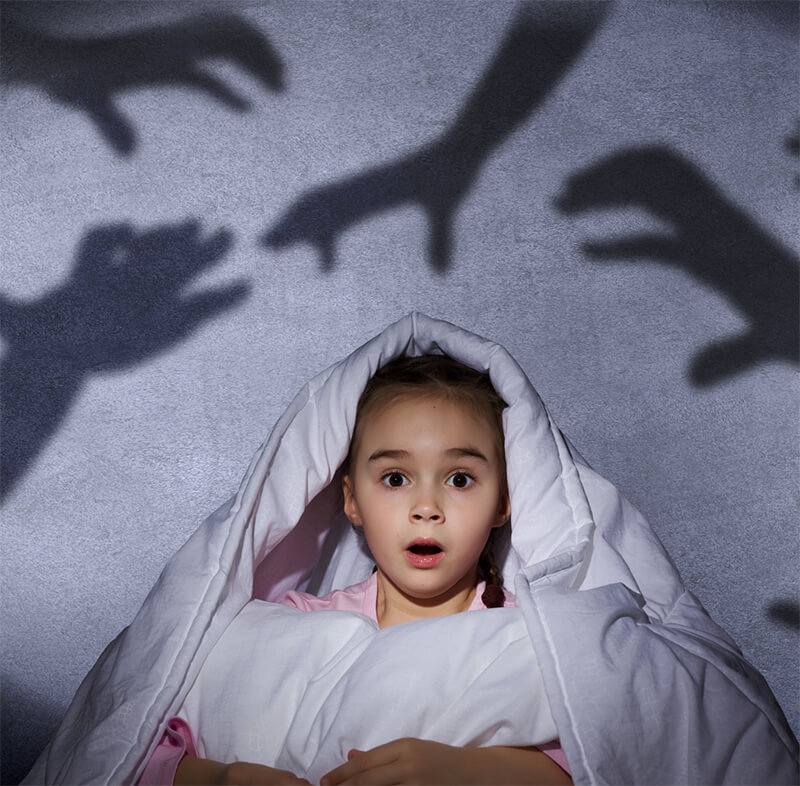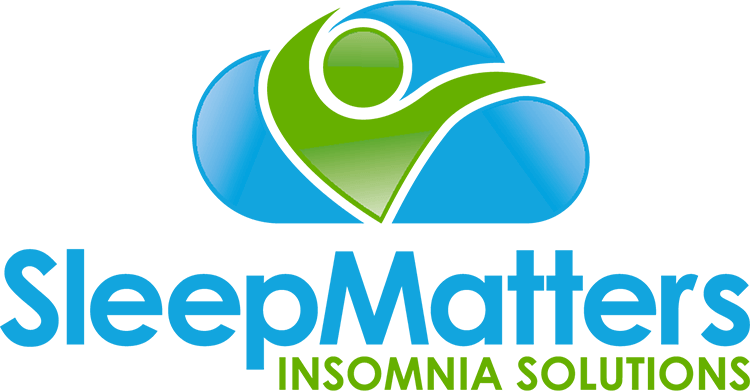
Eleanor Jones (Clinical Psychologist Registrar)
What are sleep terrors?
Sleep terrors (also known as night terrors) are often confused with nightmares, but they are actually a different phenomenon.
Sleep Terrors are a type of parasomnia, an unusual behaviour that accompanies sleep. Sleep terrors are a partial arousal parasomnia, meaning that the person experiencing the sleep terror shows signs of being both awake and asleep. Someone experiencing a sleep terror may seem like they are awake, but they are still in a sleep state. Upon waking in the morning, they are unlikely to remember that the sleep terror even happened, or the dream that may have accompanied it.
Someone experiencing a sleep terror may sit up in bed, thrash about, and walk. Their eyes are often open. They may talk and may converse with other people (to a limited extent). They may whimper, cry out, or shout. The person having a sleep terror will often appear highly distressed, but they are totally unaware of their behaviour. They may push parents or others away, flail, or behave strangely. They will often seem agitated, confused, and frightened, but sleep terrors can also be much milder, and in this case, may be called a confusional arousal.
Sleep terrors can be very distressing for others who are observing the person with sleep terrors, but this is not generally the case for the person experiencing the sleep terror episode who often will not recall that it happened when they wake the next morning.
Sleep terrors usually occur within the first few hours of falling asleep. They can last for just a few minutes, or up to an hour. If someone tries to soothe the person experiencing an episode of sleep terrors, they may resist, or become more agitated.
What causes sleep terrors?
Sleep terrors occur when a person suddenly arouses from deep or slow-wave sleep. This arousal occurs alongside an appearance of intense fear, both physiologically (such as a pounding heart, hyperventilating, and dilated pupils) and behaviourally (such as screaming and crying).
Many things can make sleep terrors more likely, or trigger the first episode of sleep terrors. These include:
- Inadequate sleep;
- Irregular sleep schedule or a change in the usual sleep schedule;
- Other factors that disrupt sleep, such as difficulty breathing, or periodic limb movement disorder;
- Fever or illness;
- Medications that increase slow-wave sleep, such as benzodiazepines or tricyclic antidepressants;
- Caffeine;
- Sleeping with a full bladder;
- Sleeping in a different environment;
- Noise and light;
- Stress and anxiety.
It is normal to be concerned about why a child may be experiencing sleep terrors. Often, parents worry that it means their child has gone through a trauma, or that the sleep terrors themselves may result in psychological problems for their child. Sleep terrors are typically not associated with trauma, and if the child does not wake during the sleep terror, they will typically have little to no memory of the event. In most cases, the sleep terrors are much more distressing for others than for the child themselves.
How common are sleep terrors?
The chances of someone experiencing sleep terrors increase if you have a positive family history of sleep terrors – for example, if your parent had sleep terrors, you are more likely to also experience them. Sleep Terrors are also more common in people who have migraine headaches or Tourette’s syndrome.
Sleep terrors are more common in children and usually resolve during adolescence. Only about 2-3% of adults experience Sleep Terrors. In children who sleepwalk, about 10% will also experience sleep terrors.
By 8 years of age, about 50% of children with a history of sleep terrors will no longer experience them. In most cases, the onset of puberty resolves sleep terrors as this comes with changes in how much deep sleep a person experiences each night.
How are sleep terrors different from nightmares?
The Sleep Foundation defines nightmares as unpleasant or frightening dreams that cause emotional distress. Nightmares usually occur during Rapid Eye Movement sleep (REM sleep), a lighter stage of sleep that typically occurs during the second half of the sleep period. They usually don’t come with any physical movement or vocal behaviours, and it is common to remember the details of a nightmare. Overall:
- Sleep terrors occur in the first few hours of sleep, and come with movement, vocalisations, but no or little memory of the event.
- Nightmares occur in the later parts of sleep, and are not accompanied by movement or vocalisations, but people typically remember their nightmare, often in vivid detail.
What can you do about sleep terrors?
With time, the person experiencing the sleep terror will naturally return to a calm state of sleep. When supporting someone with sleep terrors, remain calm and keep your distance, unless they are unsafe. Usually, attempts to soothe them lead to more agitation. Most children who experience sleep terrors will grow out of them without the need for intervention. Until then, management of sleep terrors can include the following:
Safety measures
As the person with sleep terrors may move around, it is important to ensure that they are safe. This might include using gates at their door or at stairs, locking exterior doors and windows, lighting the hallways, and removing trip hazards. If a child is having a sleepover, it is helpful to let the other parents know about their sleep terrors and the best way that they can support the child if it occurs away from your home.
Management of trigger and exacerbating factors
Take note of what has occurred the day and evening before a sleep terror, to help keep track of factors that may lead to sleep terrors in the night. For example, going to bed later, not going to the toilet before bed, or facing daytime stress and worry. If you know what makes a sleep terror more likely to happen, this means you can do things to manage these factors and reduce sleep terror occurrence.
Sleep hygiene
Sleep hygiene refers to all the habits and practices that promote healthy sleep. For sleep terrors, the most important part of sleep hygiene is maintaining a regular sleep schedule, and gaining enough sleep. Research shows that sleep deprivation is the main contributor to sleep terrors and other parasomnias. As part of reducing sleep deprivation, it is also recommended to avoid caffeine (including coffee, tea, and energy drinks).
Behavioural management
When the sleep terrors occur, it is recommended to:
- Avoid waking the person experiencing the sleep terror. This usually increases their agitation and prolongs the length of the sleep terror episode. It can also mean that the person remembers any distressing dreams that may accompany the sleep terror.
- Gently guide the person back to bed, to encourage them to return to a calm state of normal sleep.
- Avoid interfering too much, as this can also prolong the sleep terror event. Although it is tempting and natural to want to comfort someone experiencing asleep terror, this can increase their agitation. Instead, try quietly standing nearby to make sure they are safe, but limit your interactions with them as much as possible.
- For children, avoid discussing the sleep terror with them the next day. This can worry the child and may lead to them resisting bedtime and increasing sleep deprivation, which only makes sleep terrors more likely.
If the sleep terrors are severe, frequent, or appear chronic in nature, then further intervention can be helpful. This can include:
Medication management
Medication may be helpful if the sleep terror episodes are very frequent or severe, if they significantly disrupt the family, or if there is a high risk of injury to the person or to others around them. Consult with your GP or paediatrician if you think this may be beneficial.
Scheduled awakenings
This is a behavioural strategy that can be used when sleep terrors occur every night at approximately the same time each night. It involves waking the person 15-30 minutes before the time that they usually have their first episode of sleep terrors. It can help to keep a sleep diary to track the exact time that each episode of sleep terrors occurs. For example, if your child has sleep terrors, usually sleeps at 7:30pm, and has sleep terrors at 9pm, then the scheduled awakening time would be 8:30pm. You only need to just wake them, that is, so they change position or mumble. This typically needs to continue for several weeks, following which you can re-evaluate whether further intervention or support is required.
See your GP, paediatrician, or us at Sleep Matters if you need support with managing your own or your child’s sleep terrors.
